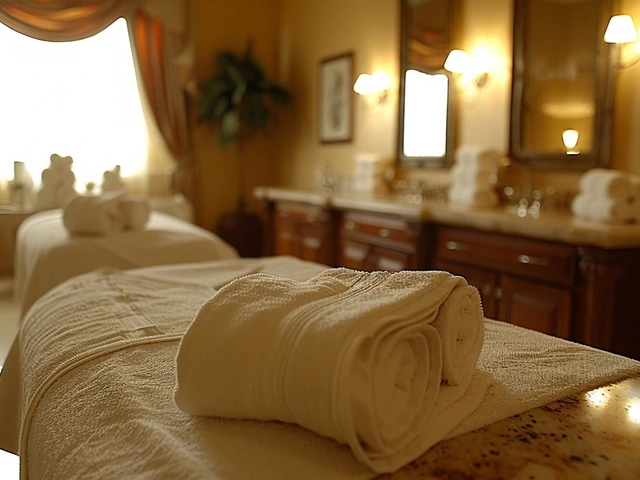Biofeedback: See Your Stress and Learn to Change It
You can watch your body’s stress on a screen and then teach it to calm down. That’s biofeedback in plain terms: sensors show a signal your body makes (like heart rate or muscle tension), and you use that information to change how you respond. It sounds high-tech, but the idea is simple — awareness plus practice equals control.
How biofeedback works
Sensors pick up signals your body already gives: heart rate, breathing, skin temperature, muscle tension, even brain waves (EEG). The device turns those signals into numbers or graphs you can see in real time. When you try a technique — slow breathing, a relaxation cue, or a posture change — you watch the screen and learn what actually works to shift the signal. Over time your nervous system follows what your brain practices.
That visible feedback speeds learning. For example, people with migraines, high blood pressure, or anxiety often see fewer symptoms after regular biofeedback. Athletes use it to recover faster and sharpen focus. Even vets and trainers monitor dogs’ heart rate and behavior to spot stress; combining simple HR monitoring with massage or calming routines can help a tense dog relax.
How to try biofeedback (at home and with a pro)
Want to try it without spending a fortune? Start with breathing and a cheap heart-rate monitor or a pulse oximeter. Notice how slow, steady breathing lowers your pulse and steadies the screen. Apps that track heart-rate variability (HRV) — like Elite HRV or HRV4Training — give clear numbers you can practice improving over days and weeks.
If you want muscle tension work, small EMG devices show when a muscle relaxes. Those are great if you hold your shoulders tight all day. EEG-based neurofeedback (brain waves) needs a trained practitioner and more equipment, but it can help severe anxiety, focus problems, or sleep issues.
Expect a typical pro session to start with a quick health check, sensor placement, a baseline reading, then guided practice for 20–40 minutes. Most people need multiple sessions to build lasting change. Home practice between sessions is what makes progress stick.
Safety notes: biofeedback is low-risk, but it doesn’t replace medical care. If you have heart problems, seizures, or serious psychiatric conditions, talk to your doctor first. For pets, always check with your vet before trying monitoring tools or new therapies.
Biofeedback is practical, not mystical. It turns body signals into usable data so you can train calmer responses fast. Try a simple HRV app and five minutes of steady breathing — you’ll see results in minutes and more change over weeks. If you like guided help, find a certified biofeedback practitioner and combine sessions with massage or relaxation work for best results.

Unlocking the Potential of Biofeedback Therapy: Essential Insights and Techniques
Biofeedback therapy is a non-invasive technique that teaches individuals to change their physiological activity for the purpose of improving health and performance. Precise instruments measure bodily functions such as heart rate and muscle tension, providing real-time feedback to help users adopt strategies to control these processes consciously. This article delves into the science behind biofeedback, its various types, benefits, and practical applications. From stress management to enhancing concentration, discover how this pioneering approach is paving the way for innovative self-regulation and mindfulness practices.

The Role of Biofeedback in Mental Health
Hi there! In my latest post, I'm taking a deep dive into the role of biofeedback in mental health. This unique therapy technique allows us to listen to our bodies more closely, helping to manage stress, anxiety, and a host of other conditions. It's a fascinating topic and I can't wait to share what I've learned about its immense benefits and its potential to transform mental health treatment. Be sure to check it out, especially if you're interested in non-traditional therapies!

How Biofeedback is Revolutionizing the Health Industry
As a passionate and informed wellness enthusiast, I am thrilled to explore how biofeedback is radically changing the health industry. This transformative innovation is redefining how we understand our bodies, improving our capabilities in handling stress, honing mental efficiency and even supporting disease management. Get ready to dive into the world of self-awareness it promotes, from understanding our physiological responses to learning how to manipulate them for better physical and emotional health. Join me in uncovering this game-changing health trend.

Understanding the Role of Biofeedback in Physical Therapy
In this article, we dive deep into the world of biofeedback and its vital role in physical therapy. We'll explore how this therapeutic technique both increases awareness of our body processes and assists in healing. I aim to give you a clearer picture of its functions and benefits, framing complex medical jargon in a simple, easily digestible way. Join me as we uncover this intriguing facet of the physical therapy realm.

Biofeedback: A Breakthrough in Mental Health Recovery
Hi there, ladies! Have you ever heard about biofeedback? It's a groundbreaking technique in mental health recovery that I can't wait to share with you. With biofeedback, we can actually see and monitor our body's functions, offering us a novel way to manage stress, anxiety, depression, and so much more! It’s fascinating how it joins the dots between our physical and mental states. Join me as we delve deeper into this topic!

Biofeedback: A Unique Approach to Balancing Mind and Body
Hi there, folks! Today, we are delving into the fascinating world of biofeedback, a unique therapy that helps us strike a healthy balance between the mind and body. It's all about learning to control our body's functions, from heart rate to muscle tension. So join me as we explore how this holistic healing method can lead to profound wellness and positivity. So, are you ready to discover how to take control of your well-being?

Unveiling the Magic of Shiatsu Massage
Sep, 28 2023



